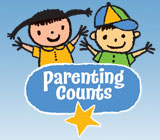Ever-changing, instantly responding to variations in the weather, expressing seasonal cycles, presenting fluctuating palettes of texture, color, form, fragrance, and sound, plants are unmatched in their ability to stimulate the senses and create a positive aesthetic effect.
-Robin Moore, in Plants for Play
As the threat of climate change becomes more pronounced, scientists have proposed a wide range of mitigation efforts — many of which are far beyond the means of early childhood providers. In
Good magazine (Fall 2009;
www.good.is), Hashem Akbari offers a suggestion that most early childhood programs could consider — painting roofs white. The practice of changing solar reflectance, or albedo, of built surfaces has been in practice for thousands of years. Akbari observes...
"Increasing the solar reflectance of [surfaces] would reduce the outflow of thermal infrared radiation into the atmosphere. In addition to reflecting light back into the atmosphere, cool roofs reduce energy use in air-conditioned buildings and increase comfort in non-air-conditioned buildings. In cities, the widespread application of cool roofs and cool pavements helps to mitigate summer urban heat islands, thereby reducing the overall air-conditioning load and improving outdoor air quality and comfort."
For more ideas on going green,
check out the column of engineer Adam Neugebauer in issues of
Exchange.

Understand what is safe, environmentally friendly, and healthy when it comes to products and practices used in your program. Help make the world a safer, healthier place for young children. The
Go Green Rating Scale for Early Childhood Settings is a comprehensive, research-based tool to help you measure the greenness of your setting, evaluate your practices, and take steps toward environmental improvement that will contribute to children's potential for long, healthy lives. Categories evaluated in the rating scale include:
- Air quality
- Cleaning products
- Chemicals found in soaps, lotions, and sunscreen
- Pests and pesticides
- Chemicals found in plastics
- Lead and other contaminants
- Stewardship and green living
 << Previous Issue
| View Past Issues | | Next Issue >>
<< Previous Issue
| View Past Issues | | Next Issue >>  Understand what is safe, environmentally friendly, and healthy when it comes to products and practices used in your program. Help make the world a safer, healthier place for young children. The Go Green Rating Scale for Early Childhood Settings is a comprehensive, research-based tool to help you measure the greenness of your setting, evaluate your practices, and take steps toward environmental improvement that will contribute to children's potential for long, healthy lives. Categories evaluated in the rating scale include:
Understand what is safe, environmentally friendly, and healthy when it comes to products and practices used in your program. Help make the world a safer, healthier place for young children. The Go Green Rating Scale for Early Childhood Settings is a comprehensive, research-based tool to help you measure the greenness of your setting, evaluate your practices, and take steps toward environmental improvement that will contribute to children's potential for long, healthy lives. Categories evaluated in the rating scale include:

Post a Comment